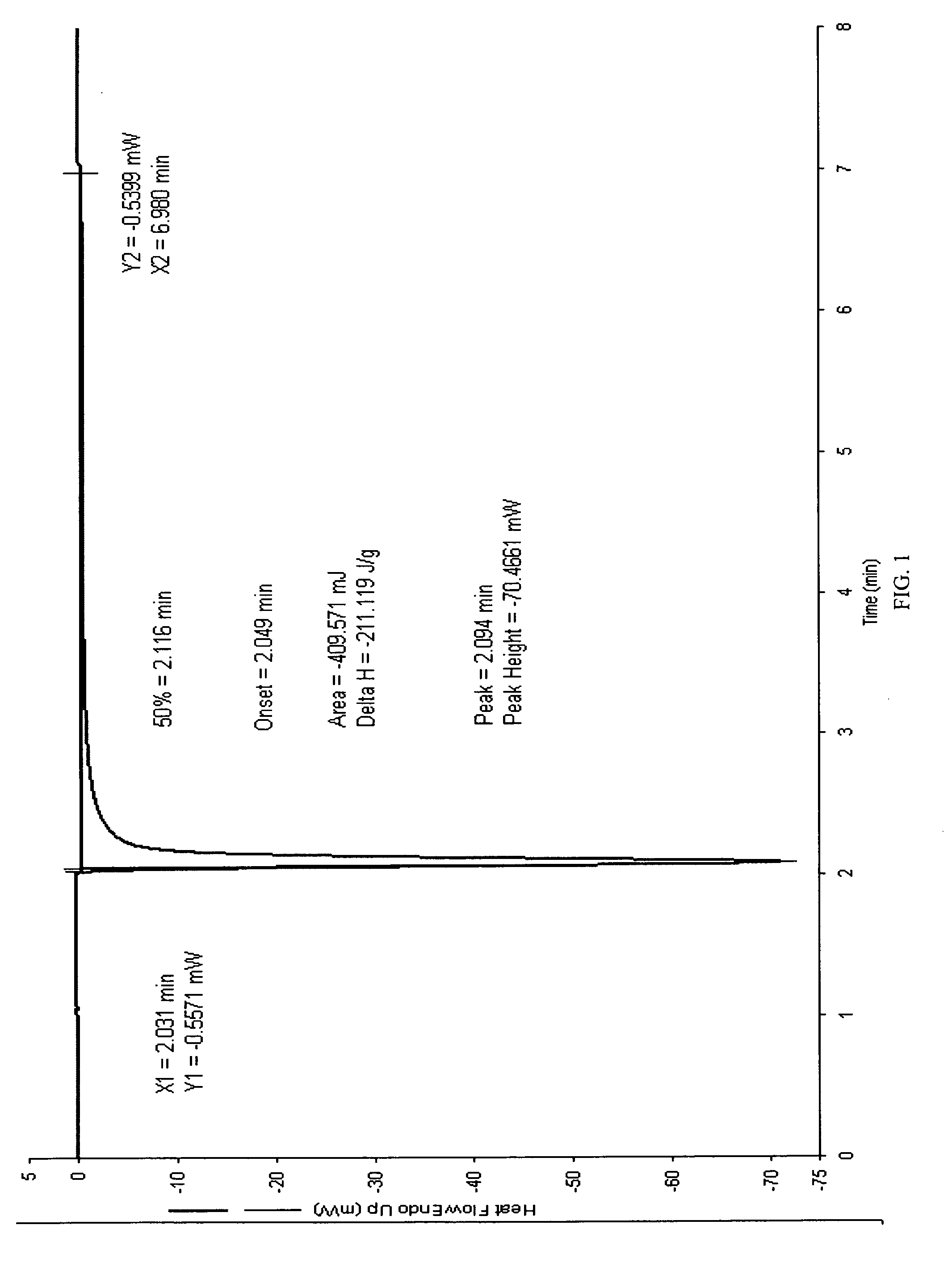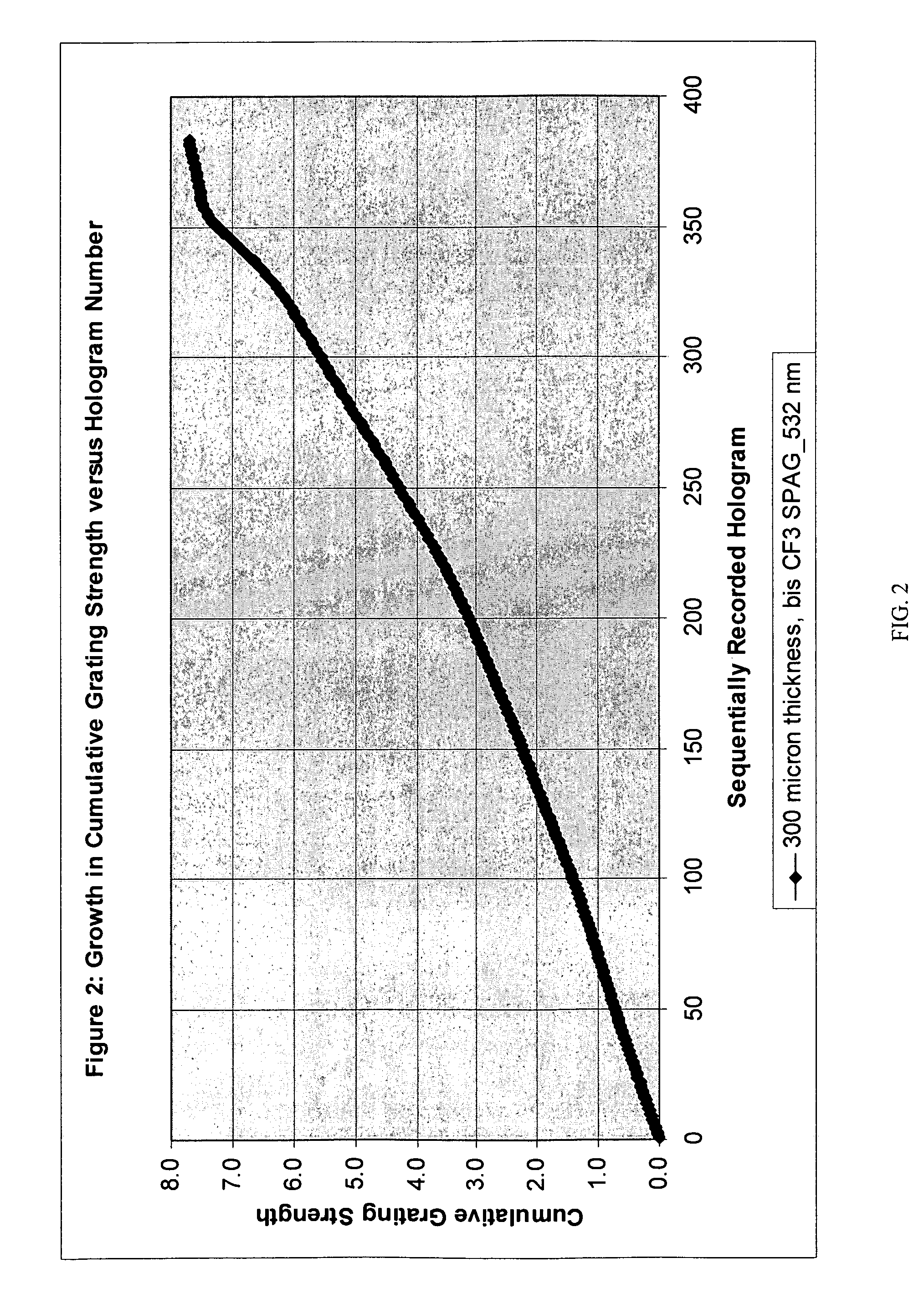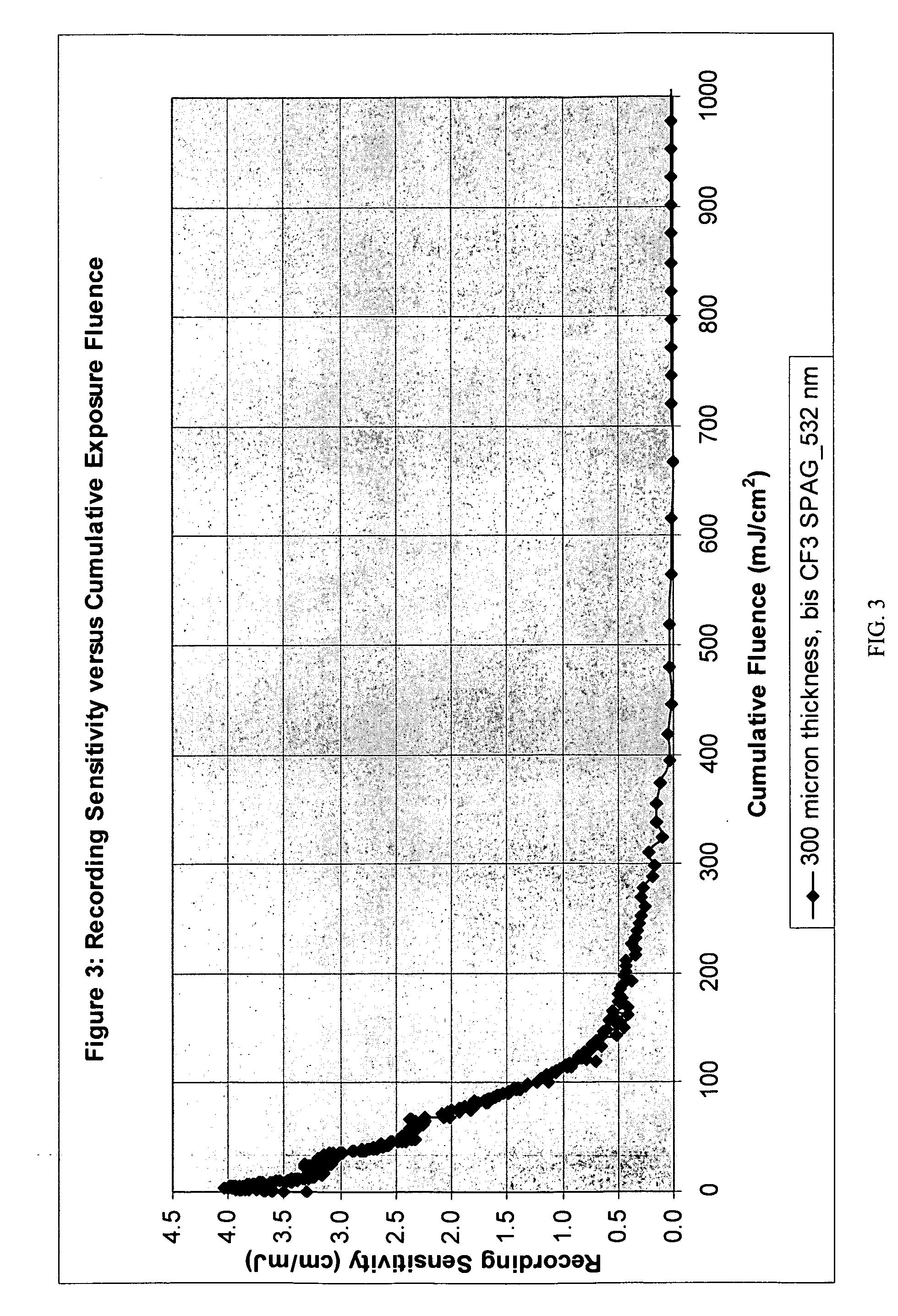Fluoroarylsulfonium photoacid generators
a technology of fluoroarylsulfonium and photoacid generators, which is applied in the direction of photomechanical equipment, group 3/13 element organic compounds, instruments, etc., can solve the problems of affecting the efficiency of light utilization in the region, affecting the photo-response of the initiator system, and ambiguous impact of substituents on acid generation, etc., to achieve rapid sensitization, improve the solubility, and improve the effect of efficiency
- Summary
- Abstract
- Description
- Claims
- Application Information
AI Technical Summary
Benefits of technology
Problems solved by technology
Method used
Image
Examples
example 1
Preparation of the Grignard Reagent
[0076]Magnesium turnings (1.2153 g, 50 mmol) were charged into a two-necked round-bottom flask that was equipped with a magnetic stirrer, reflux condenser, and an addition funnel. Diethyl ether (10 mL) was added to immerse the Mg turnings. The contents were kept under nitrogen. 3-Bromobenzotrifluoride (9.0004 g, 40 mmol) was added dropwise at room temperature. An exothermic reaction started within 2-3 minutes after having added approximately 0.5 mL 3-bromobenzotrifluoride. The reaction contents were diluted with 10 mL of diethyl ether and the rest of 3-bromobenzotrifluoride was added dropwise over 30 min. The reaction was fast and exothermic, and provided a reaction mixture that had a dark brown color. The reaction contents were stirred for 2 hours after the exothermic reaction was over. The yield of Grignard reagent was assumed to be 2.0M (9.9724 g, 40 mmol in 20 mL diethyl ether).
example 2
Preparation of Diphenyl-3-(trifluoromethyl)phenylsulfonium Triflate
[0077]As stated above, the triflates were prepared following the procedure of Miller, R. D., Renaldo, A. F., and Ho, H., J. Organic Chem., 1988, 53, 5571-73, the contents of which are incorporated herein by reference. This procedure was slightly modified to obtain the best yield.
[0078]A 100 mL three-necked round-bottom flask was charged with phenyl sulfoxide (4.05 g, 20 mmol) and methylene chloride (40 mL). The reaction vessel was equipped with a magnetic stirrer, an air condenser to which a nitrogen inlet / outlet was mounted, a thermometer, and a suba-seal septum. The reaction contents were cooled to −78° C. and treated with trimethylsilyl trifluoromethanesulfonate (5.894 g, 26.5 mmol, 4.8 mL). The addition was completed within 30 min. The reaction mixture was kept at −78° C. for 20 min. The contents were warmed to 0° C. and kept at 0° C. for 30 min. The reaction mixture was cooled to −78° C. and previously prepared ...
example 3
Preparation of Diphenyl-3-(trifluoromethyl)phenylsulfonium tetrakis(pentafluorophenyl) Borate
[0079]Diphenyl-3-(trifluoromethyl)phenylsulfonium triflate (2.2863 g, 4.76 mmol) was dissolved in 20 mL methanol in a 250 mL Erlenmeyer flask that was equipped with a magnetic stirrer. Lithium tetrakis(pentafluorophenyl) borate (3.3900 g, 4.94 mmol) was dissolved in 20 mL methanol in a 50 mL Erlenmeyer flask. The lithium tetrakis(pentafluorophenyl) borate methanol solution was then added slowly to the methanolic triflate solution at room temperature. The addition was completed within 20 min. The Erlenmeyer flask containing the lithium tetrakis(pentafluorophenyl) borate was washed three times with 5.0 mL methanol. Each rinse was combined with the reaction mixture. An additional 10 mL of methanol was used to rinse the walls of the reaction flask. The total amount of methanol used was 65 mL. The reaction contents were stirred at ambient conditions for 45 min. and then water was added dropwise t...
PUM
| Property | Measurement | Unit |
|---|---|---|
| wavelength | aaaaa | aaaaa |
| wavelengths | aaaaa | aaaaa |
| temperatures | aaaaa | aaaaa |
Abstract
Description
Claims
Application Information
 Login to View More
Login to View More - R&D
- Intellectual Property
- Life Sciences
- Materials
- Tech Scout
- Unparalleled Data Quality
- Higher Quality Content
- 60% Fewer Hallucinations
Browse by: Latest US Patents, China's latest patents, Technical Efficacy Thesaurus, Application Domain, Technology Topic, Popular Technical Reports.
© 2025 PatSnap. All rights reserved.Legal|Privacy policy|Modern Slavery Act Transparency Statement|Sitemap|About US| Contact US: help@patsnap.com



